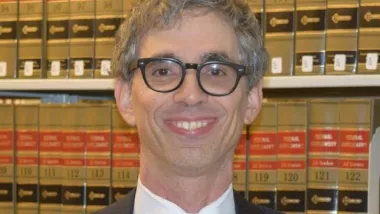Decades ago, ecologist Garrett Hardin wrote about the "tragedy of the commons"- when an action that is rational for one person becomes irrational when widely practiced. For example, suppose that there are a few dozen cattle ranchers near a pasture open to all. It makes sense for each rancher to let as many cattle graze as possible on the pasture, so that the ranchers can feed their cattle without buying additional land. But if every rancher lets as many cattle as possible graze, sooner or later the land will be overgrazed and the cattle may starve.
Decades ago, ecologist Garrett Hardin wrote about the "tragedy of the commons"- when an action that is rational for one person becomes irrational when widely practiced.
For example, suppose that there are a few dozen cattle
ranchers near a pasture open to all. It
makes sense for each rancher to let as many cattle graze as possible on the
pasture, so that the ranchers can feed their cattle without buying additional
land. But if every rancher lets as many
cattle as possible graze, sooner or later the land will be overgrazed and the
cattle may starve.
Today's NIMBY ("Not In My Back Yard")-based system of land
use regulation has a similar illogic. Typically,
an urban landowner who wishes to build additional housing units will need to
request a rezoning, because existing zoning often bars densities higher than
the status quo. Because no one other than the landowner and
its neighbors care about the rezoning, municipal politicians often approve a
rezoning only if neighbors do not object.
For each individual neighborhood, it may make sense to oppose
such rezonings. New housing may lead to
additional traffic, and may even lead to decreasing real estate values as the
housing supply expands.
But what happens if every single neighborhood keeps out new
housing? Housing prices may explode,
because a reduced supply of any item is likely to raise the price of that item. San Francisco-size housing prices may be good
for the NIMBYs, but are not so good for the region's overall quality of life.
And if there are not enough housing units in existing
neighborhoods to meet demand, developers will build housing in depopulated
(usually rural) areas where there are few neighbors to object. Because public transit usually does not serve
the newest suburbs, the residents of these new homes will drive long distances to
work, thus increasing vehicle miles traveled, which increases traffic congestion
and air pollution for everyone (as well as the unforeseeable consequences of
increased greenhouse gas emissions).
And if jobs move to serve the new suburbs' residents,
eventually residents of existing urban and suburban neighborhoods will be forced to drive to those
jobs to avoid unemployment, suffering from additional transportation costs and perhaps even from the
traffic congestion they sought to avoid when they sought to exclude urban housing.
So even though NIMBY exclusion is good for its practitioners
in the short run, we all suffer in the long run, making NIMBYism a classic
example of the "tragedy of the commons."

Planetizen Federal Action Tracker
A weekly monitor of how Trump’s orders and actions are impacting planners and planning in America.

Chicago’s Ghost Rails
Just beneath the surface of the modern city lie the remnants of its expansive early 20th-century streetcar system.

Amtrak Cutting Jobs, Funding to High-Speed Rail
The agency plans to cut 10 percent of its workforce and has confirmed it will not fund new high-speed rail projects.

Ohio Forces Data Centers to Prepay for Power
Utilities are calling on states to hold data center operators responsible for new energy demands to prevent leaving consumers on the hook for their bills.

MARTA CEO Steps Down Amid Citizenship Concerns
MARTA’s board announced Thursday that its chief, who is from Canada, is resigning due to questions about his immigration status.

Silicon Valley ‘Bike Superhighway’ Awarded $14M State Grant
A Caltrans grant brings the 10-mile Central Bikeway project connecting Santa Clara and East San Jose closer to fruition.
Urban Design for Planners 1: Software Tools
This six-course series explores essential urban design concepts using open source software and equips planners with the tools they need to participate fully in the urban design process.
Planning for Universal Design
Learn the tools for implementing Universal Design in planning regulations.
Caltrans
City of Fort Worth
Mpact (founded as Rail~Volution)
City of Camden Redevelopment Agency
City of Astoria
City of Portland
City of Laramie






























